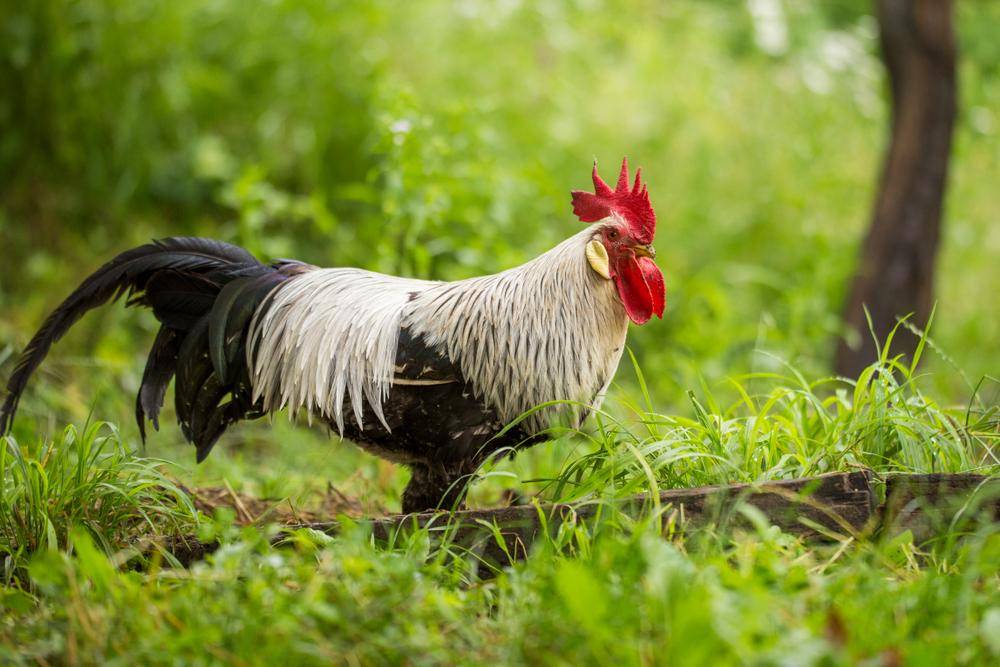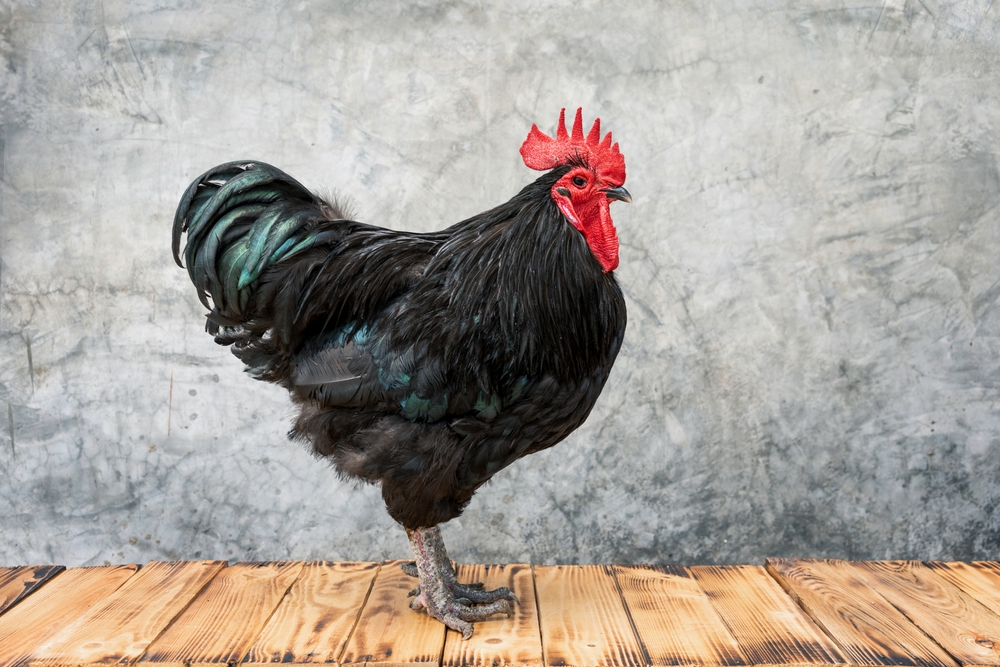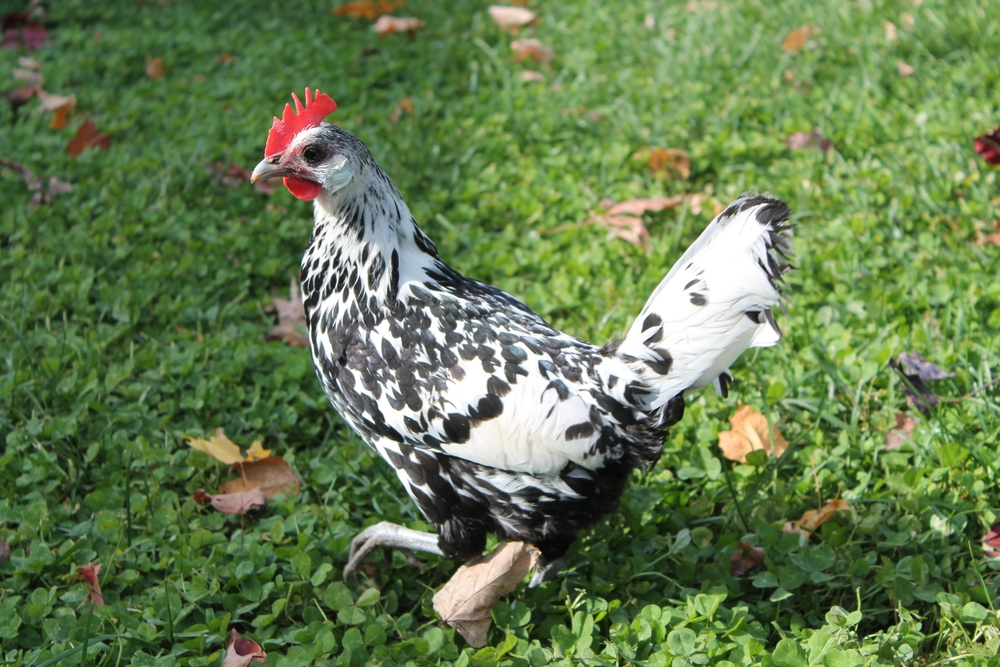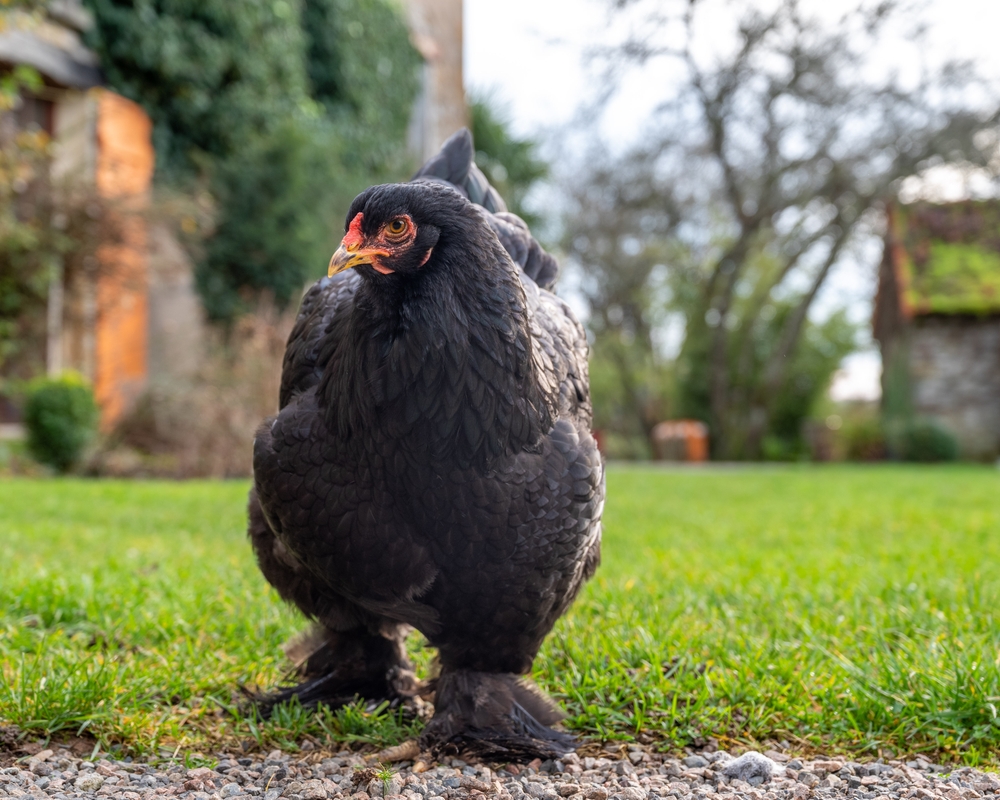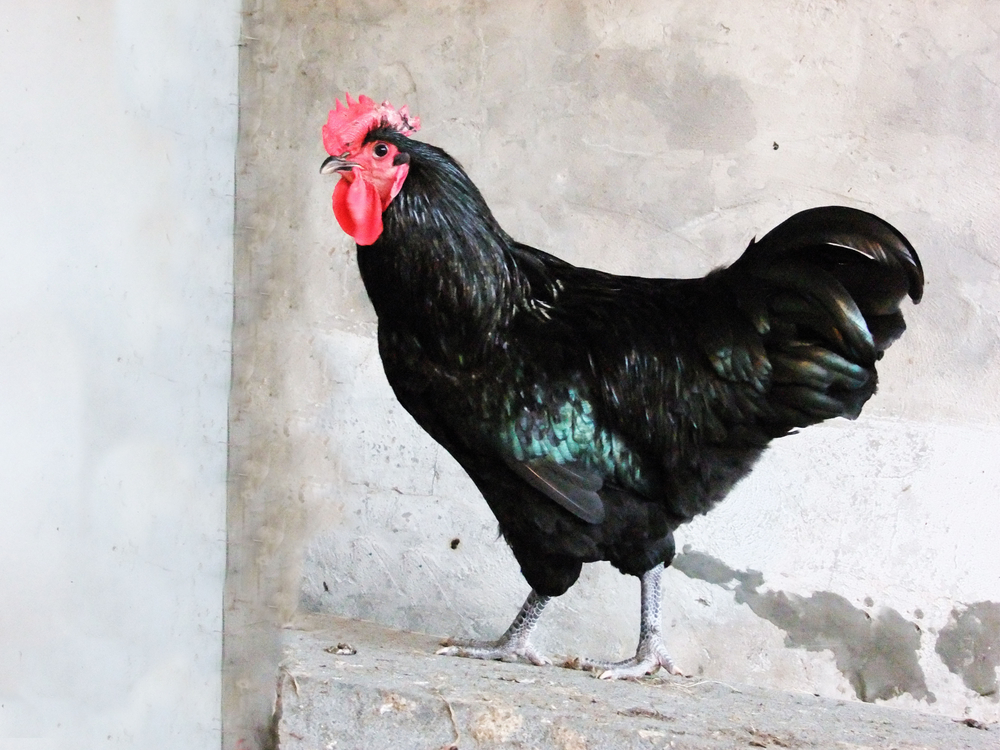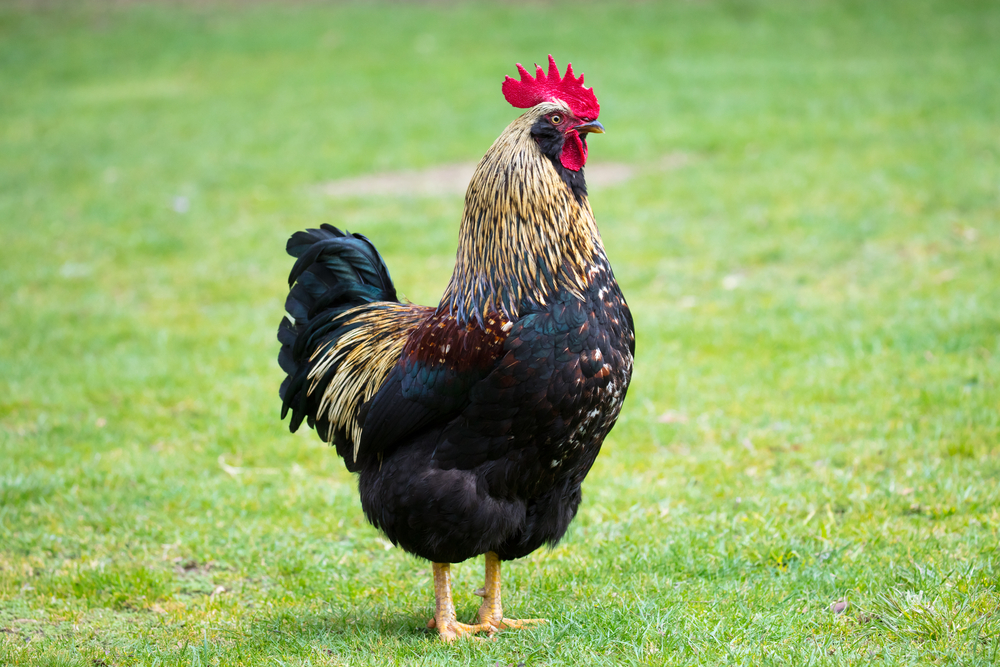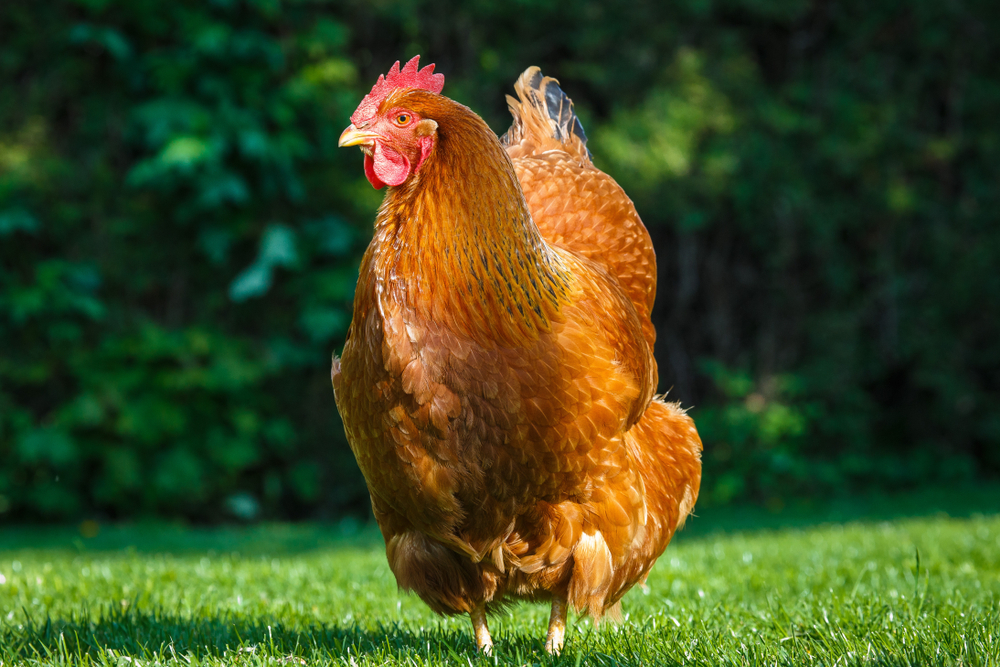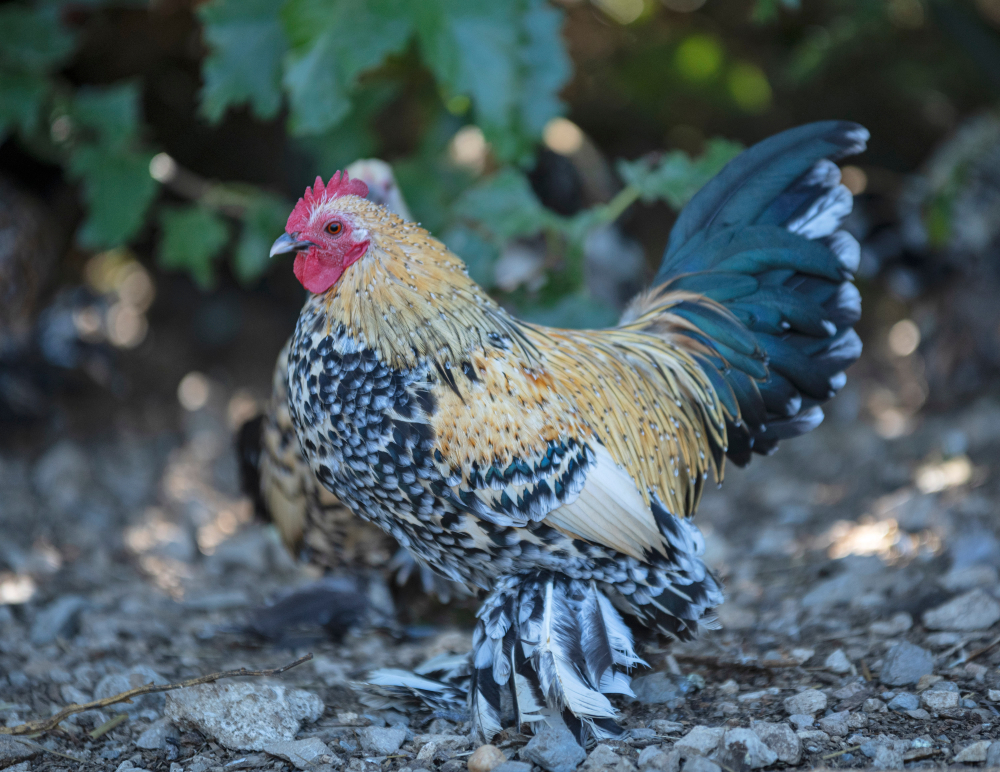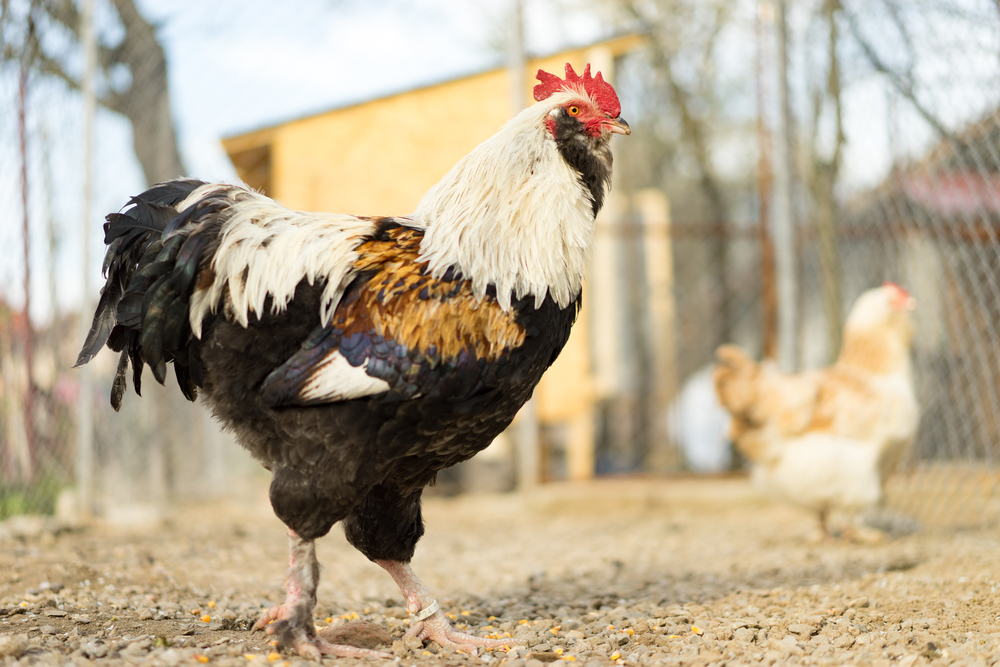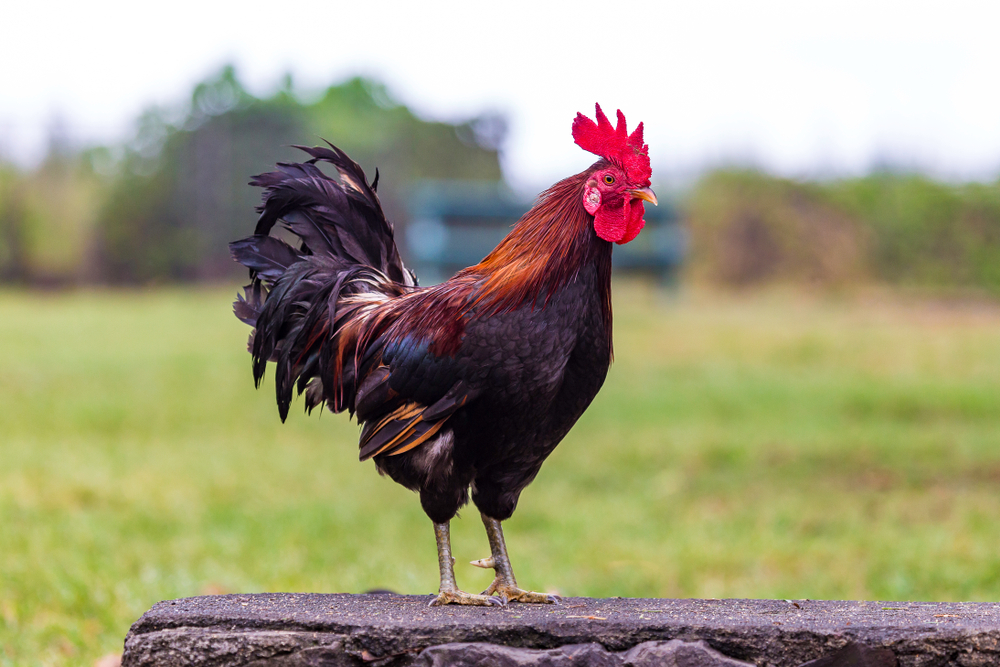The closest relative to the Leghorn is the Andalusian, another Mediterranean breed known for its active nature, strong foraging instincts, and prolific egg-laying ability. Both breeds share a similar body type, alert temperament, and preference for warm climates, though Andalusians typically lay slightly fewer eggs and come in different plumage patterns.
About
The Leghorn is a prolific egg-laying chicken breed with origins in Italy, particularly around the port city of Livorno (anglicized to “Leghorn”). The breed was imported to the United States in the early 19th century, where it was refined into the highly productive layers known today. Its reputation for efficiency, hardiness, and adaptability has made it one of the most influential breeds in modern commercial egg production.
Leghorns are lightweight, active birds, with roosters weighing about 2.4–2.7 kg (5.3–6 lbs) and hens around 1.8–2.3 kg (4–5 lbs). They have a sleek, upright body shape, long tail feathers, and large, bright red combs—single or rose—along with white earlobes and yellow legs. The most common variety is white, but Leghorns also come in brown, black, buff, silver, and other color patterns.
They are outstanding layers, producing 250–300 large white eggs per year, often with minimal feed input compared to heavier breeds. They rarely go broody, which helps maintain continuous egg production.
Leghorns are energetic, alert, and excellent foragers, thriving in free-range conditions but also performing well in commercial housing. Their light build makes them agile fliers, so secure fencing is important in backyard settings.
While they are hardy in both warm and cold climates, their large single combs can be prone to frostbite in extreme cold, so care may be needed in winter. They are generally not as docile as some heritage breeds, tending toward a more flighty temperament, but their productivity and adaptability have secured their place as a cornerstone of the poultry industry.
The Leghorn’s scientific classification is Gallus gallus domesticus, and it belongs to the family Phasianidae.
Physical Characteristics
Plumage:
Leghorns have sleek, tight-fitting feathers that give them a clean, aerodynamic look. The most common variety is White, but recognized varieties include Brown, Black, Buff, Silver, Golden, and Exchequer (mottled black and white). Their plumage is smooth and lies close to the body, reflecting their high-energy, active nature.
Head and Comb:
The head is small and refined with a single, upright comb in males and a larger comb in females that often flops to one side. Rose-combed varieties also exist in some lines. The comb, wattles, and earlobes are bright red, while the earlobes are pure white, a defining trait of the breed. The beak is yellow, strong, and slightly curved. Eyes are large, bright, and reddish bay.
Body:
Leghorns have a slim, athletic, and wedge-shaped body, built for speed and agility. The breast is moderately full, the back is long and tapers toward the tail, and the stance is alert and upright.
Legs and Feet:
The legs are clean (feather-free), long, and yellow, giving them height and stride for quick movement. The feet have four well-spaced toes with strong nails for scratching.
Tail:
The tail is long and carried high, with males displaying well-developed, arching sickle feathers. Hens’ tails are shorter but still held at a prominent angle.
Size:
-
Male Weight: 6 to 6.5 lbs (2.7 to 3 kg)
-
Female Weight: 4.5 to 5 lbs (2 to 2.3 kg)
-
Bantam Variety: Males around 26 oz (740 g), females around 22 oz (625 g)
Sexual Dimorphism:
Males are taller and more upright, with larger combs, more iridescent plumage in colored varieties, and longer tail sickles. Females have smaller frames and combs that may tilt gracefully to the side.
Leghorns’ streamlined body, bright white earlobes, and lively carriage make them instantly recognizable and one of the most iconic egg-laying breeds worldwide.
Reproduction
Mating Behavior:
Leghorns are active and alert, with roosters often being highly attentive to hens. Courtship involves tidbitting calls, short chases, and quick mating attempts. Their lighter body size generally makes mating efficient, with a recommended breeding ratio of 1 rooster to 10–12 hens.
Breeding Season:
Capable of breeding year-round in mild climates, Leghorns are most productive in spring and summer. In colder climates, egg production and fertility may dip in winter without supplemental light.
Egg Laying:
Leghorns are among the most prolific layers in the poultry world.
-
Annual Output: 250 to 320 large eggs per year, depending on strain and management.
-
Egg Color: Pure white.
-
Egg Size: Large.
Their laying ability remains high even with minimal feed compared to heavier breeds.
Broodiness and Incubation:
-
Leghorn hens are rarely broody, having been selectively bred for continuous egg production rather than maternal behavior.
-
Eggs are typically hatched using incubators or foster hens of more broody breeds.
-
Incubation Period: Around 21 days, with standard turning and temperature requirements.
Chicks:
-
Appearance at Hatch: Fluffy, usually pale yellow in white varieties and patterned in colored varieties.
-
Self-Sufficiency: Active and alert within hours of hatching; begin foraging and feeding quickly.
-
Growth Rate: Fast, reaching pullet stage in a few months and maturity soon after.
Maturity:
Leghorn pullets often begin laying early, between 4.5 to 5 months, making them one of the fastest-maturing laying breeds. Roosters are ready to breed at a similar age.
Leghorns’ early maturity, high fertility, and unmatched egg production make them a cornerstone of both backyard and commercial egg production systems.
Lifespan
Lifespan in the Wild/Farm Setting:
Leghorns are hardy and active but, as high-production layers, their commercial lifespan is often only 2 to 3 years due to declining egg production. In backyard or small farm settings where productivity demands are lower, they typically live 4 to 6 years.
Lifespan in Optimal Conditions:
With excellent nutrition, predator protection, and veterinary care, Leghorns can live well beyond their prime laying years.
-
Average Maximum Lifespan: 6 to 8 years
-
Exceptional cases: 10+ years, especially in non-production or pet settings where they are not pushed for maximum output.
Threats to Longevity:
-
Predation: Their active, free-ranging nature and tendency to wander can expose them to hawks, foxes, raccoons, and other predators.
-
Production-Related Strain: High egg output can lead to reproductive issues such as egg binding or internal laying later in life.
-
Parasites and Disease: Susceptible to lice, mites, and worms without preventative care; respiratory illnesses can occur in damp or poorly ventilated coops.
-
Environmental Stress: They tolerate heat better than cold, but extreme weather without shelter can reduce lifespan.
Adaptations for Longevity:
Leghorns’ alertness, flight ability, and strong foraging instincts help them evade some predators and thrive in free-range systems, contributing to survival in more natural environments.
Eating Habits
Diet:
Leghorns are omnivorous foragers, thriving on a mix of commercial poultry feed and naturally sourced foods.
-
Primary Feed: High-quality layer pellets or mash with 16–18% protein, plus added calcium for eggshell strength.
-
Foraged Foods: Insects, worms, spiders, seeds, grasses, weeds, and small invertebrates.
-
Treats and Supplements: Whole grains (wheat, oats, corn), leafy greens, vegetable scraps, grit for digestion, and oyster shell or limestone for calcium.
Feeding Behavior:
-
Leghorns are active and efficient foragers, capable of finding much of their own food if given access to range or pasture.
-
They consume less commercial feed than many heavier breeds, making them cost-efficient layers.
-
Their alert nature makes them quick to investigate new food sources.
Foraging Times:
-
Most active in morning and late afternoon, resting or dust-bathing during the hottest midday hours.
-
In warm climates, they will also forage in shaded or moist areas during the day to locate insects.
Adaptations for Feeding:
-
Sharp, slender beaks ideal for picking seeds and small insects.
-
Light body weight and strong legs allow them to travel farther in search of food compared to heavier breeds.
-
High activity levels contribute to efficient feed conversion for egg production.
Captive Diet Management:
-
A balanced layer feed is essential to sustain their high egg output.
-
Excessive treats can displace essential nutrients and reduce laying performance.
Leghorns’ efficient metabolism, active foraging, and low feed-to-egg ratio make them one of the most economical and productive egg-laying breeds in the world.
Uniqueness
Prolific Egg Layers:
Leghorns are famous for producing 250–320 large white eggs per year, making them one of the most productive chicken breeds in the world. Their efficiency and reliability have made them the backbone of the commercial egg industry.
Exceptional Feed Efficiency:
They have an excellent feed-to-egg conversion ratio, requiring less feed than most breeds to produce the same number of eggs. This trait makes them highly economical for both commercial and backyard keepers.
Active and Athletic:
Leghorns are lightweight, fast, and agile, with strong flight abilities and a tendency to roost high if given the opportunity. These traits make them skilled foragers and capable of covering large areas in search of food.
Bright White Earlobes:
Their pure white earlobes are a distinctive physical trait that also matches the color of their eggs, a unique point of interest among poultry enthusiasts.
Heritage with Mediterranean Origins:
Originating from Italy and refined in the United States, Leghorns have a long history as hardy, adaptable layers suited for various climates.
Low Broodiness:
Selective breeding for continuous laying has resulted in hens that are rarely broody, making them ideal for uninterrupted egg production but less suited for natural chick rearing.
Show and Utility Appeal:
While best known for utility, Leghorns are also shown in exhibitions, with multiple color varieties that add ornamental value to their productive reputation.
The Leghorn’s combination of high productivity, efficiency, and agility ensures its place as one of the most important and widely recognized chicken breeds in the world.
Be the First to Share Photos of This Species.
FAQ’s
1. What is the closest species to the Leghorn?
2. How does the Leghorn compare to other chickens?
The Leghorn stands apart from many other breeds because it:
-
Produces more eggs annually than almost any other heritage breed.
-
Requires less feed per egg, making it one of the most economical poultry choices.
-
Has a light, athletic build compared to heavier dual-purpose breeds like Plymouth Rocks or Orpingtons.
-
Is more flighty and independent, which can make them harder to confine but excellent foragers.
-
Lays pure white eggs, unlike most heritage layers that produce brown or tinted eggs.
3. What national parks provide the best chances to see a Leghorn?
As a domesticated breed, Leghorns are not found in the wild. However, they can be seen in heritage farms, agricultural programs, and poultry exhibitions within or near parklands, such as:
-
Colonial Williamsburg Rare Breeds Program (Virginia, USA)
-
Old Sturbridge Village (Massachusetts, USA)
-
Netherlands Open Air Museum – Arnhem (Netherlands)
-
Sovereign Hill (Victoria, Australia)
-
Beamish Open Air Museum (United Kingdom)
These sites maintain Leghorns for both educational and heritage display purposes.



































































